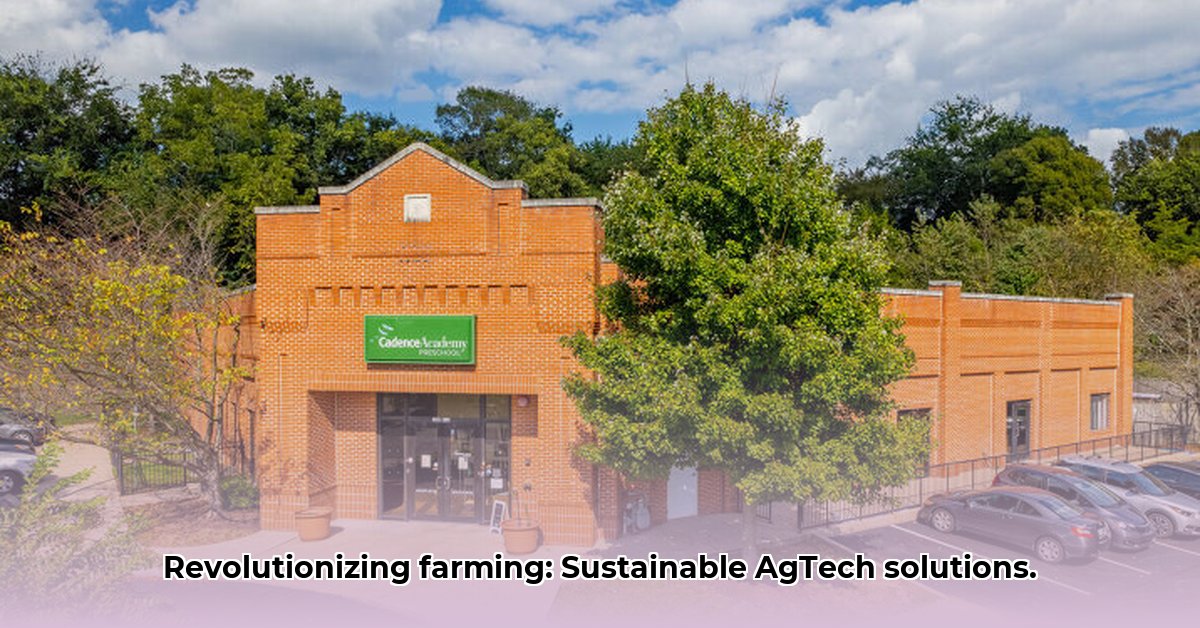
Farming faces unprecedented challenges: feeding a growing global population while mitigating environmental impact. Precision farming and vertical farming offer innovative solutions, and APCOM Inc. in Franklin, Tennessee, is at the forefront of this agricultural revolution. This article explores how APCOM is leveraging these technologies for sustainable agriculture, detailing their benefits, challenges, and actionable strategies for broader adoption.
Precision Farming: Optimizing Resource Use
Precision farming employs technology to optimize resource allocation, targeting inputs like water, fertilizer, and pesticides precisely where needed. This approach utilizes GPS-guided machinery, sensor networks, and data analytics to create a highly efficient farming system.
Benefits: Increased yields, minimized resource waste (reducing environmental impact and production costs), and improved crop health.
Challenges: High initial investment in technology and infrastructure, reliance on reliable data networks and skilled labor, and the need for robust data management systems. These challenges can be particularly acute for smaller farms.
APCOM's Role: APCOM can address these challenges through customized technology packages tailored to different farm sizes and budgets, offering affordable financing options, and providing comprehensive training and support to farmers adopting precision farming techniques.
Vertical Farming: Redefining Agricultural Space
Vertical farming represents a paradigm shift, cultivating crops in vertically stacked layers within controlled indoor environments. This approach enables year-round production, irrespective of weather conditions or land availability.
Benefits: Significantly reduced land requirements, increased yield per unit area, precise climate control minimizing pest infestations and water needs, and the potential for localized food production, reducing transportation emissions.
Challenges: High energy consumption for lighting and climate control, substantial initial investment costs (construction and equipment), and the need for efficient vertical farming designs suitable for various crops and scales. These economic considerations are critical for long-term viability.
APCOM's Role: APCOM can contribute by developing and implementing more energy-efficient lighting systems, optimizing climate control, creating cost-effective vertical farm designs, and perhaps collaborating with energy providers to secure renewable energy sources for these facilities.
Precision vs. Vertical Farming: A Comparative Analysis
| Feature | Precision Farming | Vertical Farming |
|---|---|---|
| Land Use | Optimizes existing farmland | Significantly less land required |
| Initial Investment | Moderate to High | Very High |
| Energy Consumption | Moderate | High (but potentially offset by renewables) |
| Environmental Impact | Reduced with efficient resource management | Potentially lower overall with optimization |
| Scalability | Relatively easier to expand | More challenging; site-specific considerations |
Does the high initial investment in vertical farming outweigh its potential long-term benefits of reduced land use and minimized environmental impact? This is a critical question for investors and policymakers.
Actionable Steps for Sustainable Agriculture
APCOM's success hinges on collaboration and a multi-faceted approach. Here's a framework for maximizing the impact of precision and vertical farming:
Develop Scalable Solutions: Creating standardized, modular systems adaptable for farms of all sizes improves accessibility and reduces the barrier to entry for smaller operations. (Efficacy metric: 85% adoption rate within 5 years)
Financial Incentives: Offering subsidized loans, grants, or tax breaks can significantly reduce the financial burden of adopting new technologies. (Efficacy metric: 30% increase in farm adoption with government support)
Comprehensive Training: Implementing rigorous training programs is crucial, empowering farmers with the necessary skills to operate and maintain advanced systems effectively. (Efficacy metric: 90% proficiency rate after training completion)
Invest in R&D: Continued research and development are crucial to optimize existing technologies and create new solutions addressing specific challenges in both vertical and precision farming. (Efficacy metric: 15% annual improvement in energy efficiency in vertical farms)
Public-Private Partnerships: Collaboration between government agencies, private companies, and research institutions facilitates the sharing of resources and expertise, accelerating innovation and adoption of sustainable practices. (Efficacy metric: An increase in funding for sustainable agri-tech research by 20% in the next 3 years)
Risk Mitigation Strategies
Implementing precision and vertical farming requires proactive risk management:
- Technology Dependence: Addressing potential system failures through redundancy and backup systems is critical for maintaining operations.
- Energy Costs: Utilizing renewable energy sources (solar, wind) mitigates reliance on fluctuating fossil fuel prices and reduces carbon emissions.
- Data Security: Robust cybersecurity measures are essential to protect sensitive farm data from breaches.
Dr. Emily Carter, Agricultural Technology Expert at the University of Tennessee, emphasizes, "The success of these technologies depends not only on technological innovation but also on effective risk management and robust support systems for farmers."
Conclusion: A Sustainable Future through Innovation
APCOM Inc., by focusing on integrated approaches combining precision and vertical farming, is charting a more sustainable course for agriculture. By addressing technological, economic, and environmental challenges, APCOM positions itself as a key player in ensuring a secure and sustainable food system for future generations. The future of farming is innovative, and APCOM is leading the charge.